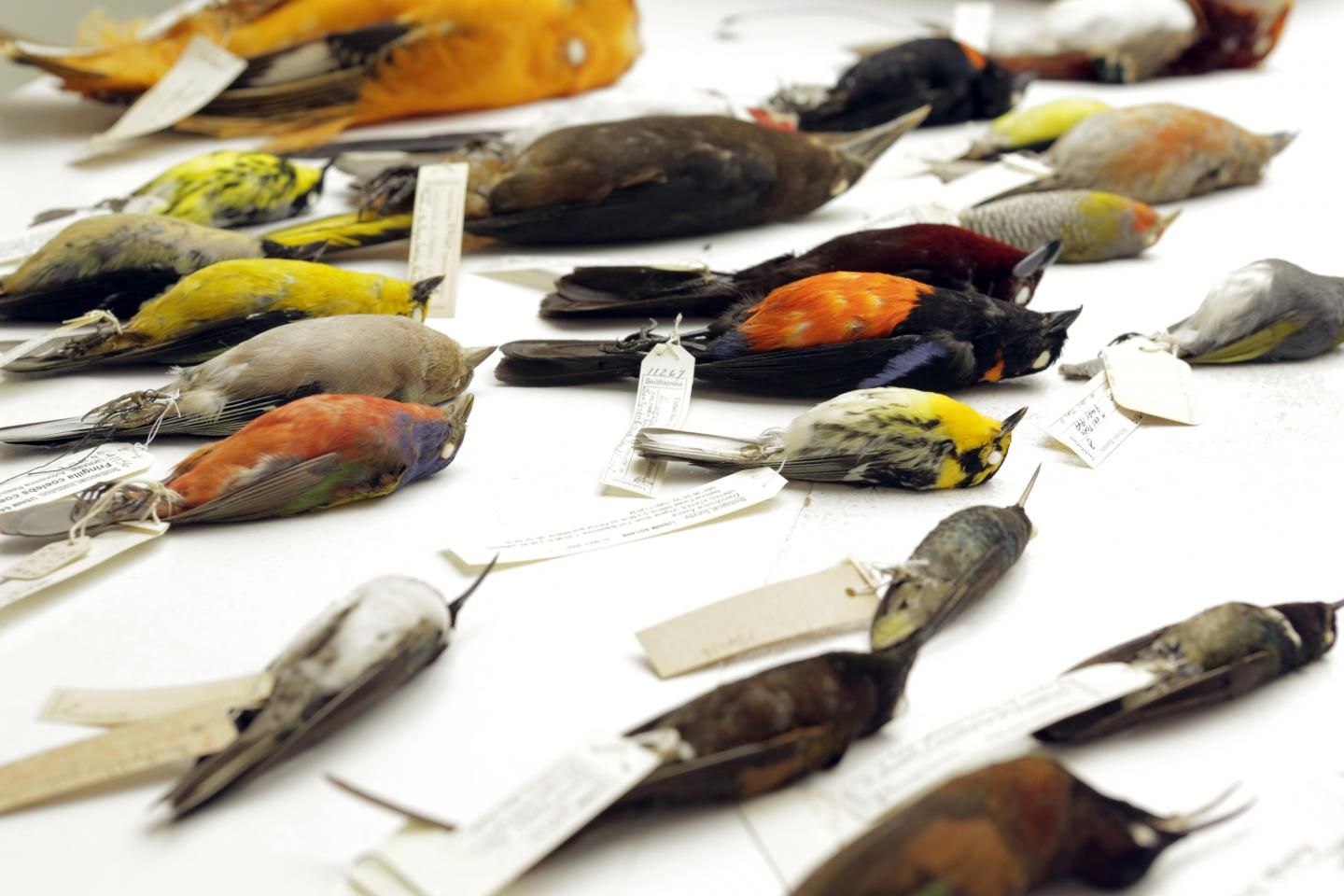
The dinosaurs, as we think of them, were obliterated 66 million years ago. But birds (and certain reptiles) managed to survive that massive extinction, evolving and flourishing into the most species-rich class of vertebrates on Earth.
Explaining how and why birds survived has been a mysterious and divisive subject among scientists, who, with only a few species of sequenced bird genomes, had relatively little to work with. Only the genomes of zebra finch, turkey and chicken were fully sequenced. But four years of research involving 200 people from 80 labs culminating in 45 fully sequenced bird genomes, representing all major branches of the bird family tree, unleashed on Thursday a trove of new analysis that sheds light on various aspects of bird evolution. Scientists are a bit closer to understanding these dinosaur survivors.
For example, a set of studies found that birds experienced a "burst" of rapid evolution right after dinosaurs disappeared. Only a few bird lineages survived the mass extinction, but once dinosaurs were out of the picture, numerous new ecological niches opened up. Birds diversified rapidly to fill the new niches, resulting in the more than 10,000 bird species known to science today.
Another study, out of Duke University, found that the genetic structure of chickens has changed the least since the days of the dinosaurs, making it the bird that most closely resembles the dinosaur ancestor of all birds.
Birds and Humans: More Similar Than We Thought
For example, one research team found that humans and birds share a similar genetic makeup when it comes to vocalization: The same genes that give humans the ability to speak give birds the ability to sing.
Scientists have known for years that certain vocal-learning birds—songbirds, parrots and hummingbirds—learn to sing song patterns in a similar way to how humans learn to form words. In a paper published Thursday in Science, a team led by Duke University neuroscientist Erich Jarvis looked deeper at that connection, and found that it a matter of genetic similarity: birds and humans use essentially the exact same genes to learn to speak.
Jarvis's team found that a set of 50 genes in one region of the brain appear to be linked with vocal learning. Those genes that were more active in humans were also more active in vocal-learning birds. That connection makes vocal-learning birds more similar to humans in terms of speech learning than they are to other birds. Even non-human primates do not have as much similarity to humans in that region of their brains as these birds do.
This may be a breakthrough for the field of speech-learning research. According to Jarvis, the finding makes vocal-learning birds extremely valuable in the lab.
"Speech is difficult to study in human brains," he said in a statement. "Whales and elephants learn speech and songs, but they're too big to house in the lab. Now that we have a deeper understanding of how similar birdsong brain regions are to human speech regions at the genetic level, I think they'll be a better model than ever."
Where Did Bird Teeth Go?
Another study, published Thursday in Science, finally answers the question of why birds lost their teeth.
Birds are descended from dinosaurs, who definitely had teeth. So why were their pearly whites eventually replaced with beaks?
The newly released genetic data allowed a team led by Mark Springer, a professor of biology at University of California at Riverside, to trace the lineage of birds back to the switch from teeth to beaks.
To find out when the switch happened, the team looked at the genes that prompt the formation of enamel and dentin, the key components of teeth. In all 48 bird genomes sequenced, they found mutations that deactivated those genes, halting tooth production.
"The presence of several inactivating mutations that are shared by all 48 bird species suggests that the outer enamel covering of teeth was lost around 116 million years ago," Springer said in a statement.
Beaks appeared slowly, at the front of the birds' mouths. Before teeth were totally lost, birds still had teeth in the back of their mouths. Eventually, birds evolved to have food-grinding muscles in their gizzards, and beaks that were highly adapted to feel their young and build nests.
Uncommon Knowledge
Newsweek is committed to challenging conventional wisdom and finding connections in the search for common ground.
Newsweek is committed to challenging conventional wisdom and finding connections in the search for common ground.
About the writer
Zoë is a senior writer at Newsweek. She covers science, the environment, and human health. She has written for a ... Read more
To read how Newsweek uses AI as a newsroom tool, Click here.





